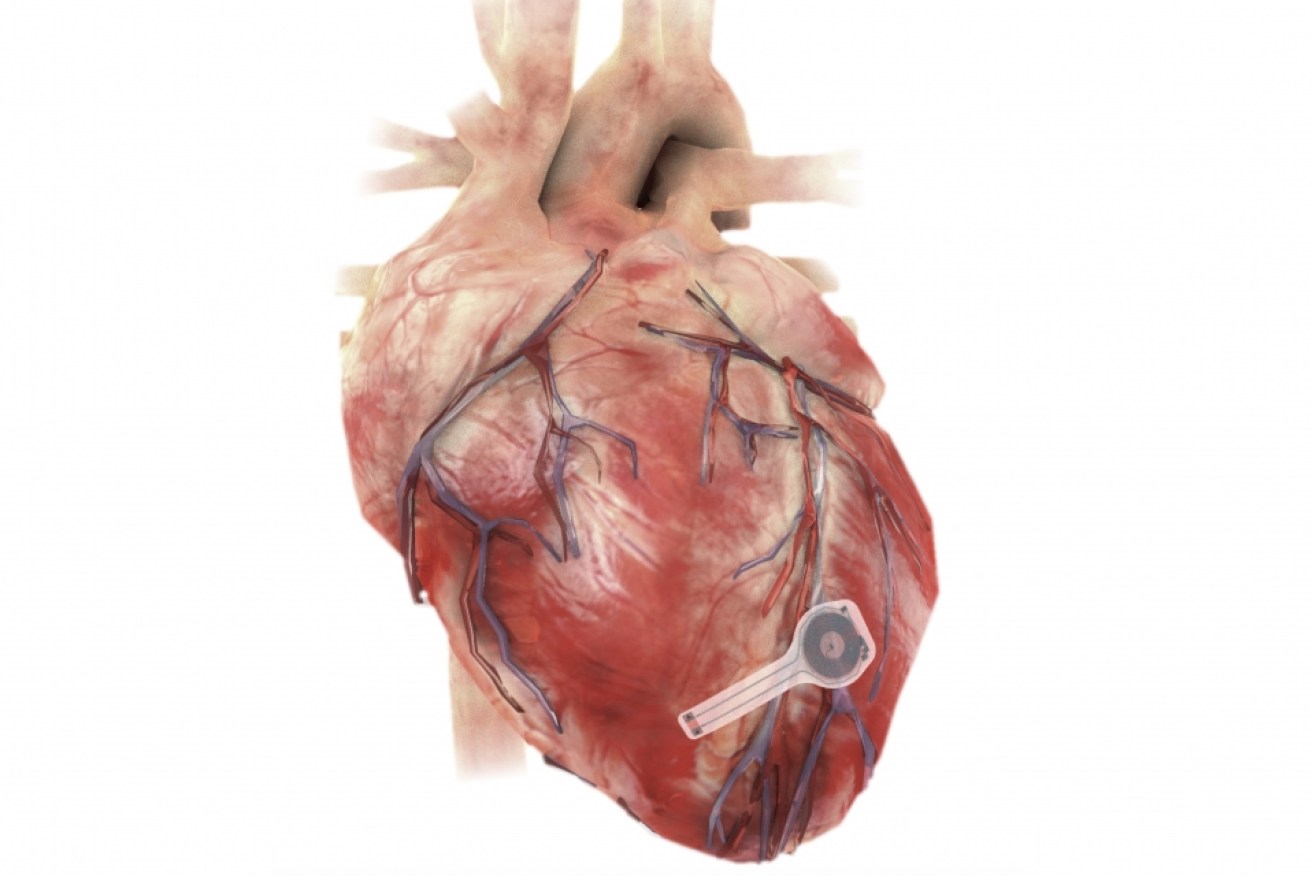Scientists invent world’s first temporary, battery-free pacemaker that dissolves when defunct


A new pacemaker that dissolves when it's no longer needed could spark a 'bioresorbable' boom. Photo: GW
Researchers in the United States have developed the world’s first ‘transient heart pacemaker’ that dissolves and is absorbed into the body when it’s no longer needed.
The lightweight wireless device needs no battery and “could be used in patients who need temporary pacing after cardiac surgery or while waiting for a permanent pacemaker”, according to the researchers at Northwestern and George Washington universities who developed the pacemaker.
In their new study published in Nature, the researchers demonstrate the device’s efficacy in a range of large and small animal models.
It’s hoped the unprecedented pacemaker will spark a boom of “bioresorbable” – or naturally absorbable – devices.
“The transient electronics platform opens an entirely new chapter in medicine and biomedical research,” study co-author Igor Efimov said.
Professor Efimov said the ‘bioresorbable materials’ at the foundation of this technology make it possible to create “a whole host of diagnostic and therapeutic transient devices for monitoring progression of diseases and therapies, delivering electrical, pharmacological, cell therapies, gene reprogramming and more”.
How it works
The device harvests energy from an external, remote antenna using near-field communication protocols, which is the same technology used in smartphones for electronic payments.
This eliminates the need for bulky batteries and rigid hardware, including wires or leads “that can introduce infections or become enveloped in scar tissue, causing further damage when removed”, the researchers said.
The problem with temporary pacemakers
When implanting a temporary pacemaker after open heart surgery, surgeons sew on electrodes on the heart muscle.
These have leads that exit the front of a patient’s chest, connecting to an external pacing box that delivers a current to control the heart’s rhythm.
When the temporary pacemaker is no longer needed, physicians remove the pacemaker electrodes.
Potential, if uncommon, complications include infection, dislodgement, torn or damaged tissues, bleeding and blood clots.
The new transient pacemaker neatly sidesteps this messy procedure.
Weighing less than half a gram, the device – soft, flexible and remotely activated – laminates onto the heart’s surface where it delivers a pulse.








